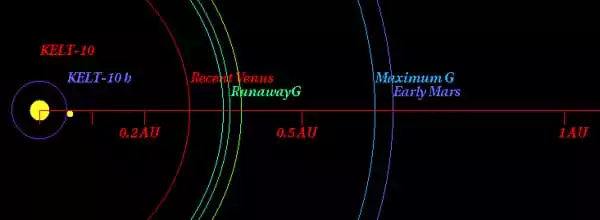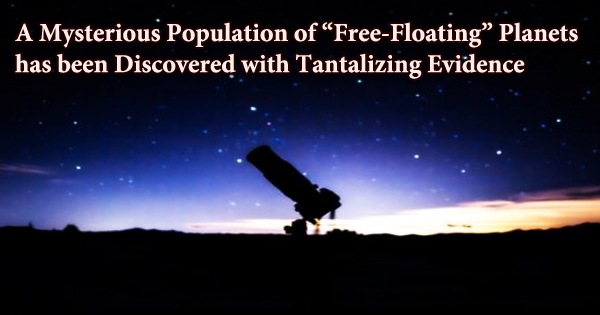KELT-10 is a star that is not part of the Telescopium constellation but is within its boundaries. It is a star in the constellation Telescopium, and its Cordoba Durchmusterung (CD) catalogue number is CD-47 12635. Kuhn et al. (KELT) discovered it, as well as its planet.
At least one Extrasolar Planet is thought to be orbiting KELT-10. It is 617.73 light-years from Earth. It is approximately 617.7 light-years (189.4 pc) distant from our solar system. The star KELT-10 has an apparent brightness of 10.8 and an absolute magnitude of 4.4. When compared to our Sun, it is 1.1 times more massive and 1.2 times larger.
KELT-10 Location
The star’s position in the night sky is determined by the Right Ascension (R.A.) and Declination (Dec.), which are comparable to Longitude and Latitude on Earth. The Right Ascension is the distance along the celestial equator expressed in time (hh:mm:ss). If the R.A. is positive, the direction is eastward. The Declination of an object is represented in degrees and indicates how far north or south it is in relation to the celestial equator.

Physical Properties
KELT-10 is a yellow dwarf similar to the Sun, although it is 7% more massive and 19% larger. It is also hotter, with a temperature of 5883 K, compared to the Sun’s 5778 K. The (V) in its spectral class indicates that it belongs to the main sequence. The star is also slightly younger than the Sun, with an age of 4.5 billion years, and brighter, with a brightness 40 percent higher. KELT-10 is home to a planet and possesses 23% more heavy metals than the Sun.
The star’s parallax is stated as 5.28000, giving a computed distance to KELT-10 of 617.73 light years or 189.39 parsecs from the Earth. It is approximately 3,631,403,251,776,711 kilometers away from Earth. The star is around 39,064,219.45 Astronomical Units, give or take a few. The distance between Earth and the Sun is measured in Astronomical Units. The number of A.U. denotes how far away the star is from the Earth in comparison to the Sun.
Planetary System
The KELT-South telescope identified a “hot Jupiter” orbiting the star in 2015. KELT-10b orbits the Sun at a distance ten times closer than Mercury and is bloated as a result of its orbit.
KELT-10b is an exoplanet that orbits the G-type main-sequence star KELT-10 in the southern constellation Telescopium, roughly 618 light-years distant. It was identified by the transit method and announced in 2016.
















